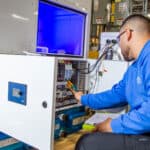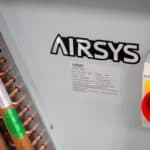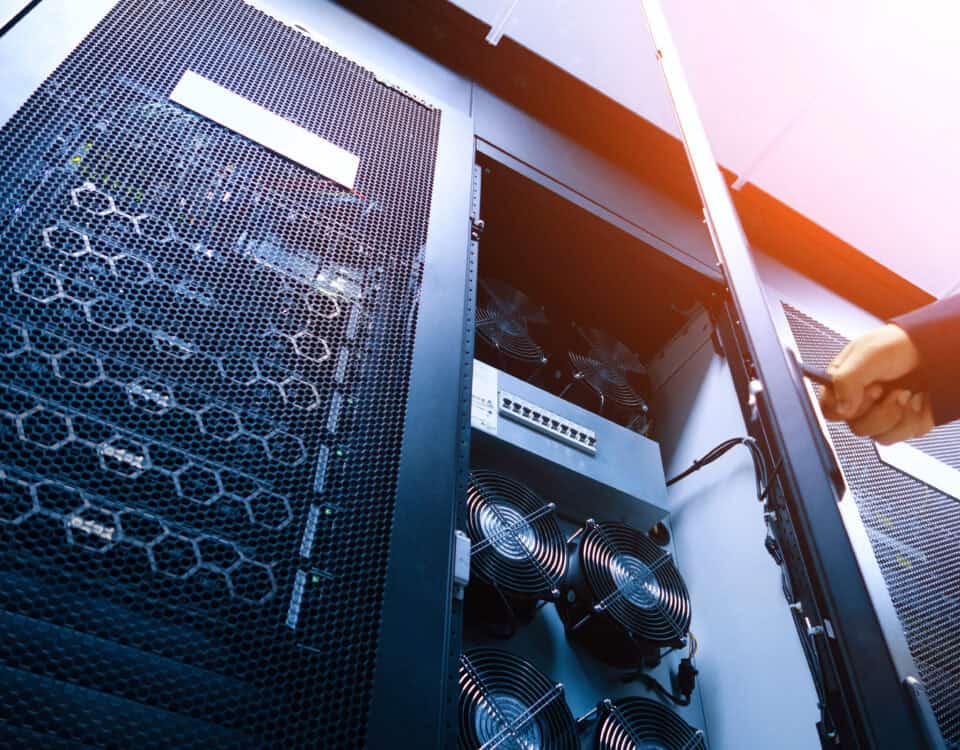
Exploring the Advanced Cooling Technologies of the Future
April 25, 2024
How to Choose the Right Cooling System for Your Data Center?
July 3, 2024The cooling practices and temperature standards of today will be considered hot tomorrow. This law of nature applies not only to climate trends but also to telecom stations and data center cooling.
All industry forecasts unanimously predict a striking rise in the density and operational capacity of telecom and data center facilities. From a cooling perspective, adjusted cooling solutions are required to efficiently and effectively manage the unprecedented cooling demands of these critical infrastructures.
What Does the Future Telecom & Data Centers Look Like?
The exponential growth of data traffic, fueled by the rise of cloud computing, mobile sites, AI, and the IoT, puts immense pressure on telecom and data center operators to keep pace with the ever-increasing demand for computing power and storage capacity.
Based on this vision, it is expected that future data centers and telecom stations will be:
- Bigger: To accommodate the constantly growing demand for data storage and processing, future facilities will be massive in scale (already known as “hyperscalers”), housing tens of thousands of servers and storage devices.
- More Sophisticated: Equipment in these hyperscale facilities will also be more sophisticated, containing cutting-edge, highly advanced servers, networking equipment, chips, processors, etc.
- More Energy-Intensive: The proliferated operational capacity of hyperscale data centers and telecom stations, alongside their advanced equipment, will consume enormous amounts of electricity.
The Strategic Role of Cooling
All of the above translates into a corresponding increase in heat generation, which must be effectively managed to prevent equipment failures, service disruptions, and escalating energy costs. Conventional and modern cooling systems are slowly becoming obsolete, raising doubts about their suitability for future, more technologically advanced data centers and telecom stations.
This realization compels a paradigm shift in the role of cooling for these critical infrastructures. In other words, keeping equipment at the desired temperature is no longer sufficient. In the data centers and telecom stations of the future, the significance of effective cooling extends far beyond temperature control, manifesting itself in four key areas:
Enabling Scalability & Future Growth
The expansion of data centers and telecom stations will be continuous and gradual. That means that adjustments to their supporting cooling systems will also be ongoing. The failure of cooling systems to seamlessly increase their capacity in tandem with the growth of the infrastructure they are designed to cool will inevitably lead to operational disruptions and downtimes.
Practically speaking, modular and scalable cooling equipment will be essential to fulfilling these needs, which is why they are being installed in cooling systems today. These allow operators to incrementally increase cooling capacity as their facilities grow without requiring complete overhauls or costly downtime.
Ensuring Business Continuity & Service Reliability
In today’s digital economy, telecom and data center services are indispensable for businesses. As companies continue to digitize, these systems will become even more crucial, leaving no room for disruptions or outages. Effective cooling systems are vital in preventing such crises, from equipment failures to data loss and service interruptions caused by overheating.
Robust and durable construction, high-performance components, precision air conditioning, and redundancy features are the key enablers of a cooling system’s reliability. These attributes guarantee the smooth operation of critical systems regardless of weather conditions or technical issues, ensuring business continuity and the uninterrupted delivery of essential services.
Reducing Operational Costs
Telecom stations and data centers are notorious for being highly energy-intensive, with cooling systems accounting for around 30-55% of their overall energy usage. Annual investments in cooling systems can reach hundreds of thousands of dollars for enterprise data centers and millions for hyperscale ones. This significant financial burden will only intensify as these facilities grow in size and complexity.
Energy-efficient cooling solutions can significantly reduce operational costs for telecom and data center operators. Advanced cooling technologies, such as energy recovery systems, variable-speed compressors, and liquid cooling, are already being incorporated into pioneering cooling solutions today. These aim to save costs by cutting energy bills and prolonging the lifespan of equipment.
Reducing Environmental Footprint
Given the anticipated expansion of telecom stations and data centers, which will result in vast energy consumption and carbon emissions, the need for sustainable cooling emerges. Not prioritizing green cooling methods will exacerbate these facilities’ substantial environmental footprints, making it harder to meet sustainability goals and regulations.
To meet this need, eco-friendly technologies, such as liquid cooling, free cooling, energy recovery capabilities, and green refrigerants, are being developed and incorporated into cooling solutions. Integrating renewable energy sources and energy storage systems with cooling infrastructure is becoming increasingly important to minimize the reliance on non-renewable sources and reduce the overall carbon footprint of these facilities.
Future-Ready Cooling
As the world becomes increasingly digitized, the demand for data and connectivity will continue to soar, driving the expansion of telecom and data center infrastructures. With cooling being the driving force of these facilities’ seamless operation, the traditional role of cooling is expected to expand into multiple dimensions.
At AIRSYS, our future-ready cooling solutions are equipped with innovative technologies such as variable speed and liquid cooling, so data center and telecom operators can start preparing early on. This will not only make your facility more future-proof but will also save you time and money. Contact us today to learn more about how we can optimize your cooling infrastructure for tomorrow’s challenges.
Sources:




